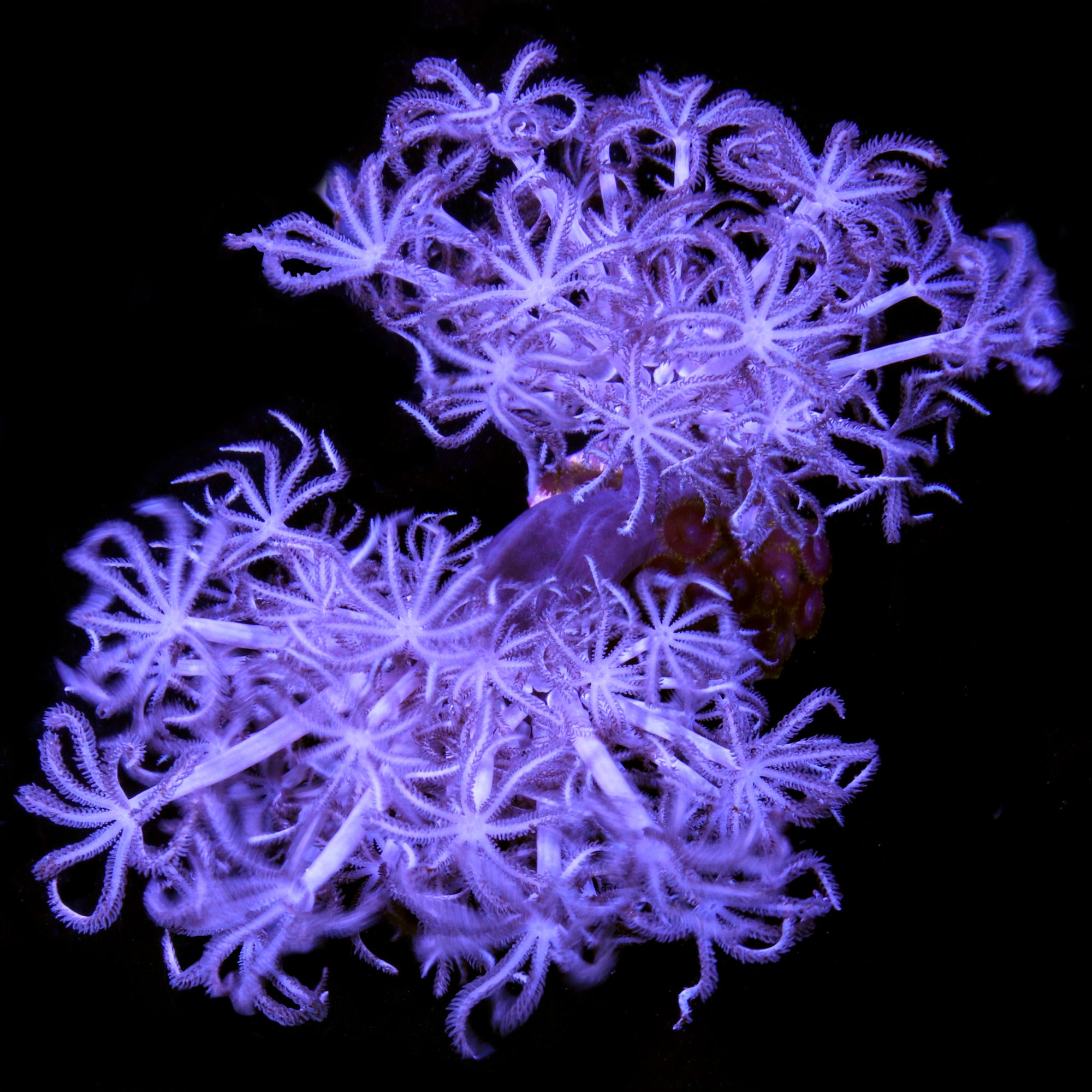Everyday low prices. Free Shipping Over $249. Or $29.99 Flat Rate Over $100
Silver Xenia Coral
$ 22.99 $ 29.99
Please select all options.
How to Care for Silver Xenia Coral:
(written by Dave Burr)
Xenia require moderate water currents and low to moderate reef lighting for proper health.
Reproduction: Colonies of Xenia reproduce by fission (splitting) and new stalks usually grow next to or above the parent Xenia.
Aquaculture: Fragments of Xenia are mounted onto small stones and grown in aquariums here at Vivid Aquariums.
Placement: Mount the Silver Xenia using IC gel glue, or putty, on an exposed rock or ledge in the bottom half of the aquarium where they can reproduce and grow new colonies that stretch up the rock. When provided with proper water conditions and iodine, colonies of Xenia can grow quite rapidly. Make sure that moderate currents will be able to supply them with necessary nutrients and trace elements. Leave several inches around the Xenia colony as they will need room to expand their colony.
Feeding: Although symbiotic algae called zooxanthellae hosted within them supply most of their nutritional requirements through photosynthesis, they do require supplemental feedings of phytoplankton and marine snow.
Lighting & Flow Requirements: The Silver Xenia requires low to moderate water flow and low to moderate lighting (PAR 80-250). T5's, Metal Halides, or LED's can all grow Xenia when the proper PAR levels are provided. We recommend a 14-20K color spectrum for best coloration.
Care Level: Easy
Lighting Requirements: Low to moderate (PAR 80-250)
Water Flow: Moderate
Aggressiveness: Peaceful
Range: Indo-Pacific, Grown in California
Family: Xeniidae
Water Conditions: 75-80° F; sg 1.024-1.026 (1.025 is ideal); pH 8.1-8.4 Ca 420-440 ppm, Alk 8-9.5 dKH, Mg 1260-1350, Nitrates <10ppm, Phosphates, < .10ppm
Water Chemistry: Providing additions of iodine will help Xenia grow. Most good salt mixes will provide enough iodine through water changes. It is important that proper calcium (420-440 ppm), alkalinity (8-9.5 dkh - run it 7-8 if you are carbon dosing) , and magnesium levels (1260-1350 ppm) are maintained. Raising magnesium levels gradually up to 1400-1600 ppm can help to combat algae outbreaks, just keep CA and Alk in line as you raise the Mg. Nitrates should be below 10 ppm and phosphates should be below .10 ppm. We recommend doing a water change when Nitrate levels rise to 10 ppm. It is important to replace your phosphate media when phosphates rise to .10 ppm. Media Reactors make the most efficient use of your phosphate media by fluidizing it.
Dosing: Vivid Aquariums uses and recommends dosing pumps to automate the dosing of additives and keep your levels more constant. A dosing pump can alleviate the chore of manually dosing your aquarium with Ca, Alk, & Mg 2,3, or 4 times per week and will benefit your aquarium by keeping your levels constant through frequent small additions of Ca, Alk, & Mg. Our tanks all progressed when we switched from 3 manual dosings per week to 70 automatic dosings per week and we got a lot more work done.
Video
Category: 10-25, easy, low-to-moderate-lighting, Soft Corals, Vivid Grown Coral, xenia-sp
Type: Corals and Inverts


